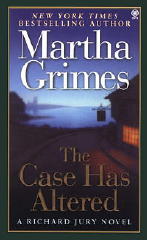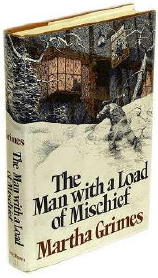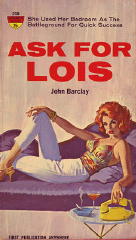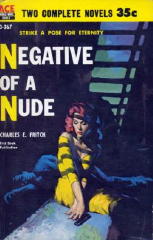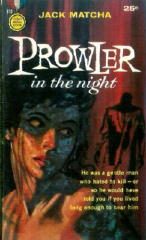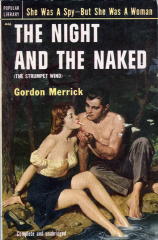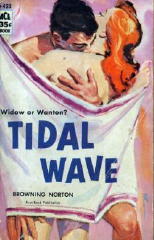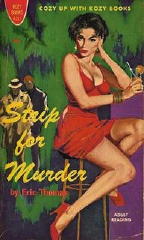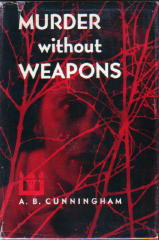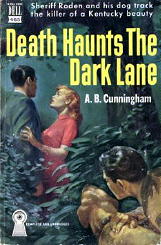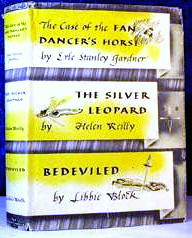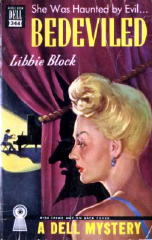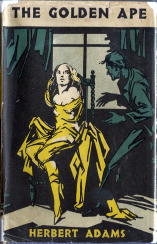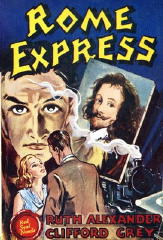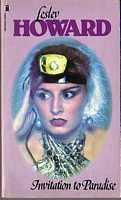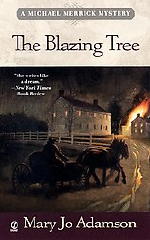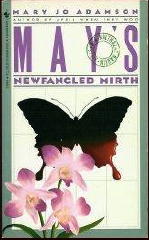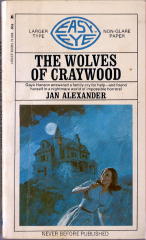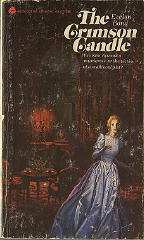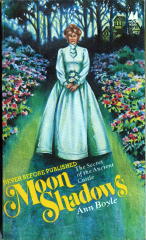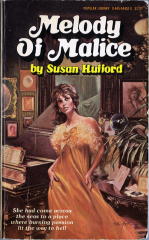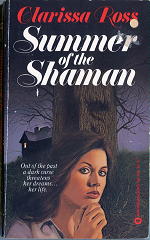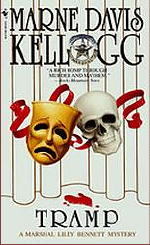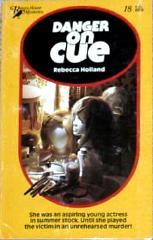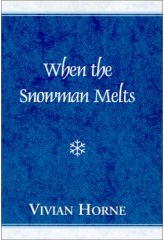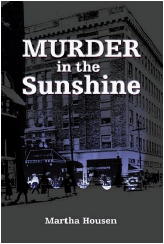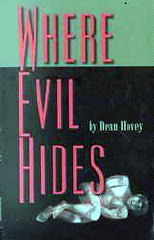ELLERY QUEEN – The Adventures of Ellery Queen.
Pocket 99; paperback reprint; 1st printing, March 1941. Earlier editions: Frederick A. Stokes, hardcover, November 1, 1934. Grosset & Dunlap, hardcover, July 1936. Mercury Bestseller Library #1, digest paperback (abridged), February 1940. Triangle, hardcover, June 1940.
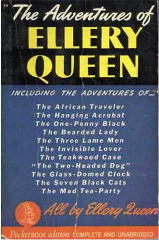
And of course the book has appeared from many another publisher over the years. I’ll add cover images for some of them along the way.
This will be a long review. Over the years I’ve never known exactly how to review collections or anthologies of short stories. I have the need, I guess, to cover each story in detail. I don’t have knack that other reviewers have of keeping the review crisp and concise with a quick summing up of the book’s overall qualities.
So this will be a long post. I read these stories at a pace of one or two an evening, then wrote up each one the next day in a diary sort of format. I may do some summarizing at the other end, but perhaps not. In any event, here are the comments that came to mind as I read them, with all story titles beginning with “Adventure of …”
“The African Traveler.” First publication. As the opening story, it’s based on an intriguing premise. Ellery has agreed teach a course in Applied Criminology at a local (unnamed) University. From the students who’ve applied, 63 in all, he’s chosen only two, John Burrows and Walter Crane, both with high academic achievements. Wheedling her own way into the course is the fawn-eyed Miss Ickthorpe, thanks to the fact that her father, Professor Ickthorpe, is the fellow on the faculty who inveigled Ellery into giving the course in the first place.
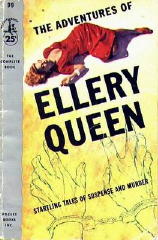
Their first assignment, a field trip to the scene of a crime: a murdered man alone in his bedroom, where all four see the body still lying on the carpet. Nothing like getting your feet wet upon a moment’s notice!
After seeing all of the clues, each of the three sleuths-in-training come up with a different solution – and choice of killer – from each of the others. And equally, of course, all three are wrong. Ellery probably has the inside edge, but I’d have graded the students almost as highly.
I have one quibble about the wristwatch, a fact that Ellery tosses off lightly but doesn’t make sense to me, but of course (once again) having a case with three partial and one full solution like this is what EQ the author was at one time known best for.
As far as I know, this is the only assignment the three students have had that was ever recorded. Too bad; they seemed to work well together, if not entirely successfully. (It may be my imagination, but Ellery seemed a little nonplussed at having an unexpected student to deal with, and primarily because she was female.)
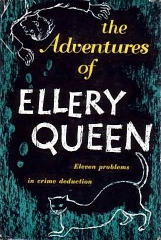
“The Hanging Acrobat.” First published in Mystery magazine, May 1934, as “The Girl on the Trapeze.” The female half of a husband-and-wife pair of circus acrobats is found hanged to death inside of the theatre where the show still manages to go on the next day, as distraught as the male half, the rather slow-minded Hugo Brinkerhof, may be.
In rather macabre fashion, the possible suspects – most of them other performers who had made time with the dead woman at one time or another – are interviewed at the scene of the crime before the coroner has come with the rope around her neck creaking and the body swaying gently back and forth. Erggh.
The primary clue has to do with the kind of knot that was used. There was a bit of misdirection involved right about here, but at least in my case as a reader, it didn’t succeed. My eye stayed on the pea. The slightness of the detective work makes the overall tale appear all the more inadequate. Not one of EQ’s better efforts.
“The One-Penny Black.” First published in Great Detective magazine, April 1933. This is the oldest story in the collection, and one that at best I found only mildly enjoyable. It begins with old Uneker’s horrible German accent, as he tells Ellery about the recent happenings in his mid-Manhattan book shop, and ends with one of the more absurd endings to a detective story I’ve ever read.
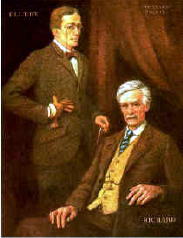
It turns out that a thief who stole a rare stamp from a neighboring store made his getaway from a neighboring store, and now someone is buying – or stealing – every copy of Europe in Chaos that Uneker had on the shelf at the time.
Sgt. Velie doesn’t get it, but I think every reader will. That part’s fine, but Ellery’s subsequent deductions depends on a man’s snuff habit – an abominable inclination shared by Ellery’s father – and won’t mean a lot to modern readers. After registering this one mild complaint, I’ll return to the ending, wherein Ellery triumphantly discloses where the stamp is.
I don’t believe that either half of the EQ writing partnership understands collectors at all, and therefore I don’t believe a word of it!
“The Bearded Lady.” First published in Mystery magazine, August 1934. One of the greatest strengths of the early EQ repertoire was the “dying message” story that helps define their approach to their 1930s detective fiction: the pure puzzle aspect. In this one, a dying artist (also a doctor, making both professions important, paints a beard on a woman in the painting he was last working on. Question: Which of several suspects was the message referring to?
That there are only a few suspects in the house should have made it easier, but I found that keeping track of them difficult to do, forcing me to go back and re-read several passages several times. There is a huge to-do about estates and who gets what when who dies, and maybe it was late at night, because that was hard to follow also.
But, and a big but, if you’re a fan of “dying message” detective puzzles, as contrived as they are – and this one I cheerfully admit is contrived – this is a good one.
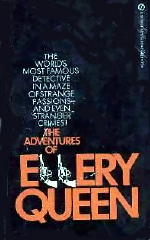
“The Three Lame Men.” First published in Mystery magazine, April 1934. A kidnapped businessman, his ex-gang girl slash showgirl mistress dead of suffocation in the closet of her apartment, and the muddy footprints of three men – all of whom limped – and no means of getting the man out of the window.
When you look back at the story, you realize that it’s a minor one – no one’s going to remember its solution as being remarkable or outlandish in any way – but it still works as a puzzle, thanks primarily to the nifty build-up and the rather outre trappings. Or if the word bizarre works for you, then use that instead.
“The Invisible Lover.” First published in Mystery magazine, September 1934. Ellery makes his way out of Manhattan for this one, to a small town upstate called Corsica NY (population 745), where a young man is in jail for killing the rival to his girl friend’s hand. The bullet that killed the man, a recent newcomer to the village, turns out to have fired by the young man’s gun.
When Ellery meets Iris Scott he understands why the bees have been buzzing. She is Circe and Vesta in one, he thinks. It takes a trip to the graveyard and digging up the dead man’s body to prove the young man’s innocence, but mildly macabre settings like this have been occurring all book long, and it fits right in.
It does the trick, too. A good story with a solution to match.
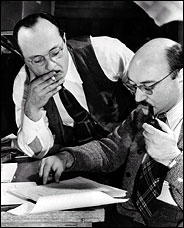
“The Teakwood Case.” First published in Mystery magazine, May 1933. I’m beginning to see a pattern here, and it’s hardly a surprising one. The earlier the story was written, the more rigid the format and presentation. As time went on, the EQ partners seemed more and more adept at avoiding stereotyped characterizations and letting Ellery’s detective work appear smoother and more skillful, instead of being forced.
This is an early one, having to do with a dead man in an apartment apparently mistaken for its owner, his brother. Inspector Queen does his usual routine with the snuff, and the rest of the case revolves around a pair of cigarette cases, each of the brothers owning one of them. The killer comes as a fairly good surprise, but the telling is dull.
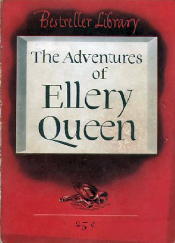
“The Two-Headed Dog.” First published in Mystery magazine, June 1934. Another aspect of these early EQ stories that I haven’t mentioned before is the oblique way they often begin, sometimes abruptly – in the sense that the story has already begun before the reader is invited in – but sometimes more conventionally, as this one does, standing out in comparison to some of the others which didn’t.
Either way, I’ve discovered that the openings are tough for me to handle. They’ve often overwritten or overcharged – that’s the best word I’ve come up with so far to describe the phenomenon – and it takes a while for the story to settle down and begin to pull itself together and into shape.
This is not a complaint. I chalk it up to sheer literary exuberance – the love of words and telling a tale. Reading their early stories now, I can sense the joy the EQ cousins must have had in writing them, and the overall effect has been contagious. My complaints, as you’ve been reading them, seem minor in comparison.
This story, with its roots based on Greek mythology (Cerberus), is a good one. It’s a ghost story about a Cape Cod roadside inn with a haunted cabin for rent, and it’s up to Ellery to deduce why and by whom. Genuinely spooky, but perhaps too much so, as some questions are left unanswered in the denouement.
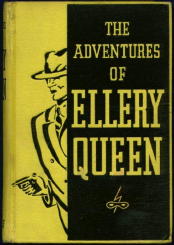
“The Glass-Domed Clock.” First published in Mystery League Magazine, Oct 1933. This particular “dying message” mystery story was written even before the previously mentioned one, “The Bearded Lady.” It also features what had been a standard ingredient in the half dozen or so Ellery Queen novels published up this time, a Challenge to the Reader…
…with one difference. This one comes right at the beginning, reporting as it does that Ellery had stated: “Anyone with common sense could have solved that crime. It’s as basic as five minus four leaves one.”
Didn’t do me a bit good. I didn’t read carefully enough. A murdered curio dealer leaves a trail from a broken glass-domed clock to a jewel whose position was far back in the case he took it from, making it obvious that the jewel was a key to the message as well as the clock, as there were many other clocks he could have chosen to break.
This is a very finely – and fairly – plotted story. And yet, it’s also a little too fussy. And more than that, the EQ stories don’t seem to have aged well, and the significance of the clock is a case in point. In contrast, the Sherlock Holmes stories seem ready to last another century, and EQ’s don’t. Maybe Ellery needed a Watson to “uncomplicate” the stories he was in. (I know. My spell-checker knows that that’s not a word also.)
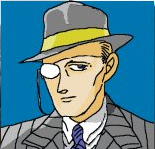
“The Seven Black Cats.” First published in Mystery magazine, October 1934, as “The Black Cats Vanished.” There is yet another young unattached woman whom Ellery meets in this story who is fascinated by either his appearance or his reputation in solving crimes, or both.
Nothing seems to come of these brief, cursory attachments, as the lady in question never appears again in another story. While Ellery seems to welcome the attention, he also seems uneasy about it – until, that is, he’s solving the mystery at hand takes the full focus of his abilities.
Take Miss Curleigh, for example. She’s the pet store owner who poses Ellery the problem in this tale: why a woman who hates cats keeps buying another one week after week, each almost identical to the one before.
The woman’s name is Euphemia Tarkle, and she is also bedridden, an invalid. I haven’t been keeping note of unusual names in the previous stories, but this one is, well, unusual. Unusual enough for Ellery to be take notice of it himself, when he hears it.
One other aspect of a common EQ trait occurs in this one, otherwise about average for the stories in this collection. The killer’s name – and yes, of course, there is one – is revealed until the last two words in the story.
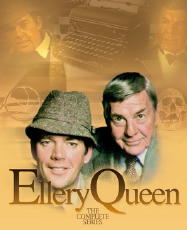
“The Mad Tea-Party.” First appeared in Red Book Magazine, October 1934. EQ has been saving the best for last, although I liked the first one and quite a few others too. I’ve always liked mysteries that connect themselves in wacky ways with nursery rhymes and childrens’ stories, and this is among the best of them.
The cousins must also enjoyed theatrics among their repertoire of mystery tricks, for for when Ellery manages to reach an isolated friend’s home in the hinterlands on Long Island – on a dark and rainy night, yet – he’s confronted with the other guests acting out their roles in a scene from Alice in Wonderland.
And when the host mysteriously disappears during the night, and mysterious packages beginning arriving – all connected with Alice once again – it makes for one of the cleverest detective stories in the entire collection. Did I mention one scene in which the entire party is drugged and falls asleep for several hours? I should have.
I don’t think that many people will catch on to what’s going on in this one. It’s a beauty.
Whew. This review is long enough already, so don’t expect a long summary, after all. If you’re a fan of detective stories with a capital D, then either you’ve read this book already, or you should – and posthaste. If you don’t particularly care for the contrivances that make detective puzzles work, then you’re not probably reading what I’m saying right here, either.
